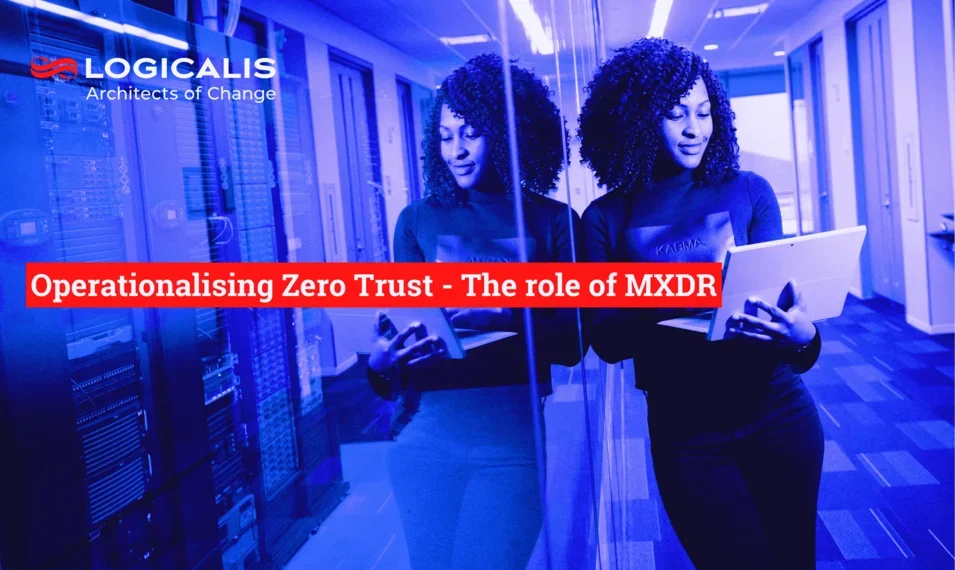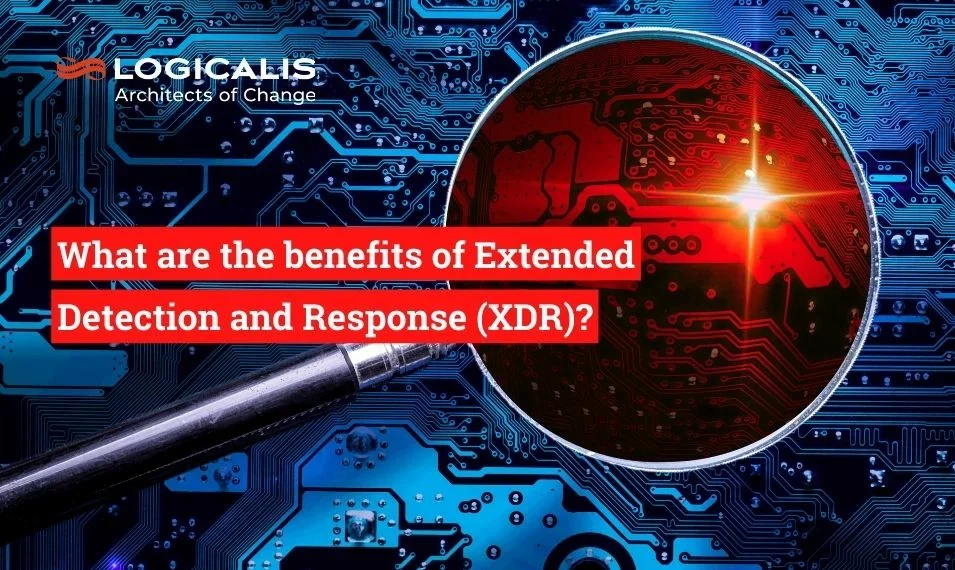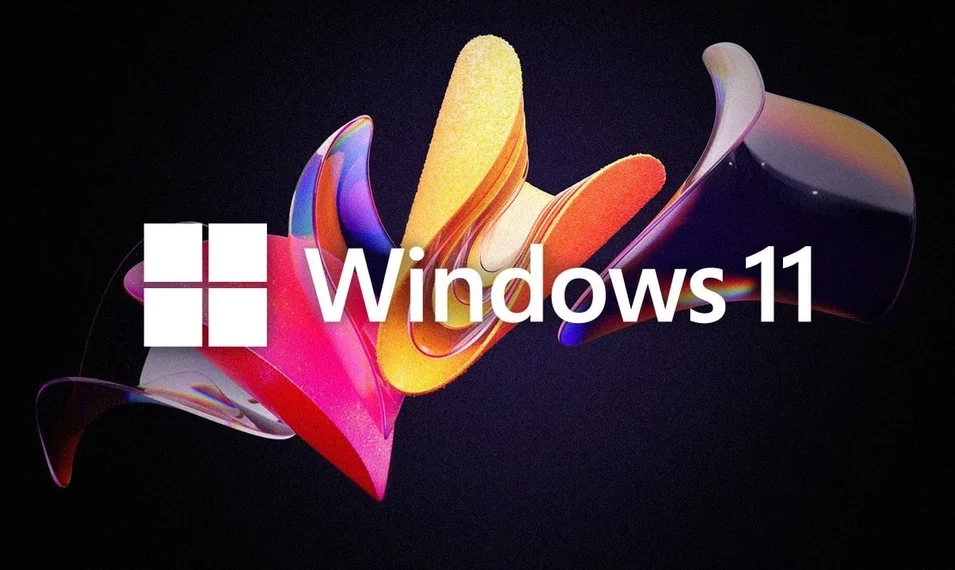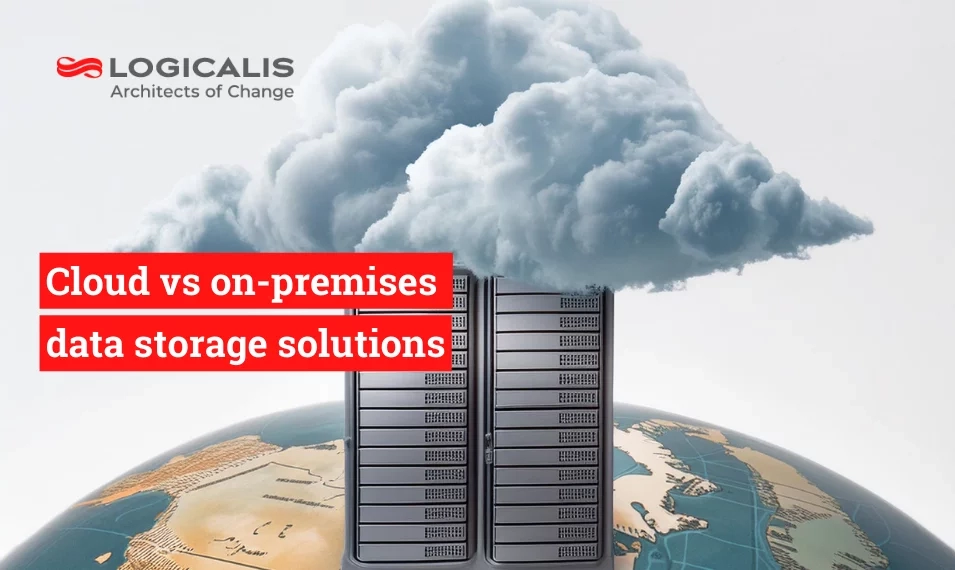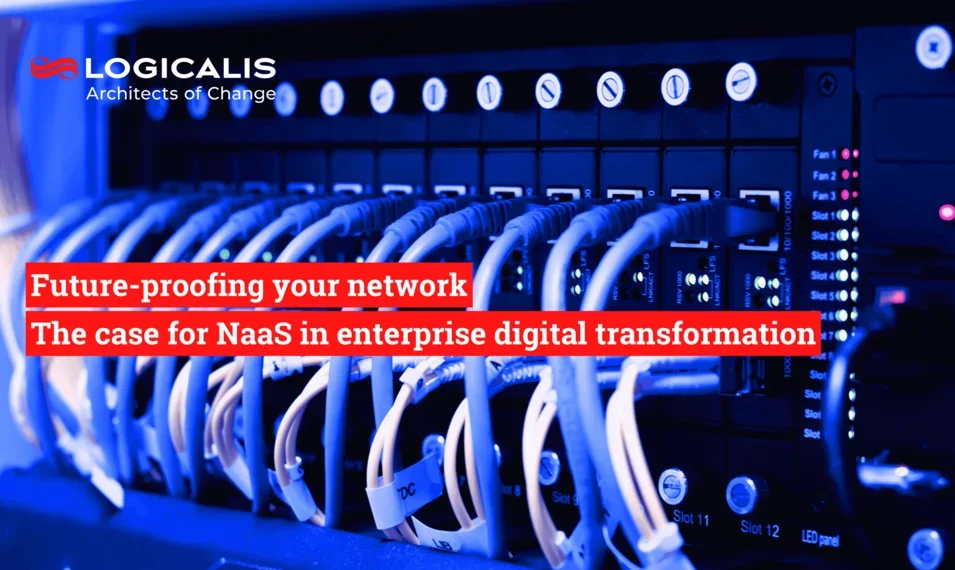
South Africa, Oct 22, 2025
Today’s most successful enterprises are defined by their agility and ability to scale. Networking-as-a-Service (NaaS) is a revolutionary business model that allows organisations to transform their network from a rigid, CapEx-heavy asset into a flexible, OpEx-driven service through a trusted managed services provider.
By outsourcing the complexity of network management, including hardware, security, and operations, CIOs can redirect their focus from maintenance to high-impact strategic initiatives. This fundamental shift unlocks significant cost savings and enables rapid deployment, enhanced scalability, and a more secure, modern network architecture.
The building blocks of a NaaS solution
Before we dive into what benefits NaaS can offer companies, it’s important to understand what services and technologies are generally covered under NaaS.
SD-WAN (Software-Defined Wide Area Network)
SD-WAN is a virtual network architecture that helps to manage and optimise connections between multiple locations. It separates the network layer from the hardware layer. It allows for more flexible management of connections and forms an easy-to-manage centralised network.
NaaS uses SD-WAN to provide a centralised, software-defined control plane. This allows for intelligent traffic routing, automated policy enforcement, and seamless management across all the organisation’s locations and cloud environments.
Connectivity
Various connectivity elements, such as internet access, VPNs, and Ethernet connections
Network Operations and Management
A NaaS provider often monitors and optimises the daily operations and maintenance of the network. This also includes provisioning, deployment, network monitoring, and troubleshooting services.
Network security
Instead of relying on many different security tools and solutions, NaaS providers build security features directly into the network fabric. This includes firewalls, intrusion prevention, implementing cybersecurity policies, distributed denial-of-service attack prevention, and malware detection.
This unified security policy ensures that the network is fast, agile, and secured.

The benefits of a NaaS solution
Major capex (capital expense) savings
By shifting from a capital expense (CapEx) model to a predictable operational expense (OpEx) subscription, organisations can direct funds to core innovation initiatives. A typical enterprise can reduce its total cost of ownership (TCO) by 30-50% over five years by eliminating hardware refresh cycles, maintenance costs, and specialised network staffing expenses.
Resiliency against cost fluctuations
NaaS allows companies to carefully monitor their costs and only pay for what they need via a subscription model. This is especially important for companies with seasonal demand shifts and inconsistent network traffic volumes.
As companies’ networking needs increase or decrease, they can adjust their network expenses without having to invest in additional physical hardware or acquire new networking skills.
Rapid network deployment
Provisioning and deploying new network systems can be done much faster than acquiring, installing, and configuring physical hardware setups. This also frees up companies’ internal IT and networking resources to focus on strategic issues, rather than time-consuming operational issues.
NaaS thereby allows companies to enter new markets much faster. The time spent on network planning, procurement, and setup can be drastically reduced, allowing for more focus on
expanding networks to new branches or offices.
Hybrid and Multi-cloud support
NaaS allows companies to seamlessly connect on-premises network infrastructure with public cloud providers, which allows network reach across multiple network environments.
NaaS offers a central view for network administration, allowing IT teams to manage and monitor their entire network ecosystem from a centralised platform. This saves costs and time by not needing multiple tools and APIs for different cloud environments.
Reduced network maintenance and downtime
A NaaS managed service provider is responsible for maintaining the network infrastructure, including hardware and software upgrades, monitoring, and troubleshooting. This frees up a lot of resources and time for the company’s internal IT team.
NaaS also helps reduce the company's technical debt drastically. The technical debt is the cost of choosing a cheaper, faster solution instead of a more complex and effective one.
By taking over the maintenance function, the NaaS provider takes on the technical debt by being responsible for hardware refreshes, software upgrades, and conducting all monitoring and maintenance.
H3: Improved network security
NaaS solutions normally come with built-in security features such as firewalls, DDoS protection, and intrusion detection. This helps to ensure that the company’s security policy is applied across all its varied cloud environments, irrespective of their location.
Cyber threats evolve rapidly, and NaaS providers can help protect against them by regularly applying security updates, patches, and conducting security checks.
Greater network visibility
NaaS providers engage in proactive network monitoring and analytics. This provides end-to-end visibility and insights into network performance and potential issues.
Traditional network setups often have visibility gaps, which make it difficult to identify network traffic flow issues, user behaviour patterns, or performance issues such as latency or packet loss.
NaaS shifts the company from a reactive break-fix approach to a proactive data-driven approach.
Scalability and flexibility
NaaS gives companies the opportunity to scale their network investment up or down as demand changes. This gives companies the agility to respond to changing business cycles, demand fluctuations, or strategic re-orientation much faster.
The network can be scaled via software which offers greater customisation opportunities and further increases the flexibility and cost-effectiveness of the system.

The challenges of a NaaS solution
As with every ICT solution, NaaS has inherent risks and challenges that a CIO must consider when reviewing the solution.
Vendor lock-in
Not all NaaS solutions are equal. Each vendor has its own proprietary technology and implementation methods.
There are also more considerations than purely a cost perspective. Should the vendor's roadmap not align with the company's evolving business needs, whether that involves a new cloud strategy, a merger, or a pivot into a new market, the cost and complexity of migrating to a different vendor or managed services platform can be high.
The ideal NaaS partner would be one that can seamlessly integrate the multi-cloud and hybrid IT environments.
Requirement for strict SLA (Service Level Agreements) and governance
Any organisation must have a robust SLA in place to manage the risk of outsourcing their network operations to an external managed services provider. It must clearly define the provider's commitments for network performance, availability, and incident response. This includes specific, quantifiable metrics for uptime (e.g., 99.999%), latency, and packet loss.
Without a solid SLA in place, it would be difficult to keep a provider accountable for downtime or degradation in network performance.
Furthermore, the governance aspect requires that the CIO ensure that the provider’s security and data management policies align with those of the organisation and the legislative frameworks of its operating environment.
Upskilling internal IT and enabling smooth transitions
Transitioning from internal network management to a managed services provider involves various roles and people within the network teams.
NaaS fundamentally changes the day-to-day operations of the organisation’s internal network and IT team. Efforts must be taken to upskill internal IT to move from managing on-site hardware and maintenance towards managing multi-cloud environments.
Existing network talent needs to transition from hands-on engineering to higher-level architecture, policy management, and vendor oversight
Final thoughts on NaaS
Moving to a NaaS service is both a technological and strategic decision for a CIO and their team. Shifting to an OpEx model and partnering with a trusted managed services provider and free up much-needed capital for other strategic initiatives.
As more companies move to a multi-cloud environment, security and agility must remain top considerations in selecting a NaaS solution.
Logicalis and NaaS
As leaders in digital transformation, Logicalis helps organisations to navigate the shift to NaaS by crafting bespoke solutions that respect the organisation’s unique strategic requirements.
To learn more about how NaaS solutions can benefit your organisation, contact our expert network team today.


